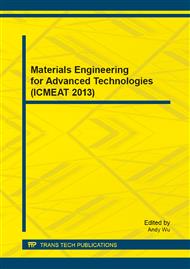p.185
p.193
p.197
p.202
p.208
p.215
p.220
p.226
p.232
Influence of Heating Systems on Indoor Environmental Quality
Abstract:
An HVAC system maintains desired environmental conditions in a space. All heating systems (heaters, warm-air or panels) do have the aim to assure in buildings the best thermal comfort. The studies and researches performed along years, by different specialists, demonstrate that at the choice of a heating solution, for a building, there must be considered the heat engineering aspects, as well as the economical ones. In this paper is developed an analysis of the temperature distribution (in air, on warm or cold surfaces etc.) and of the air streams velocity, according to the type of the used heating surfaces. It is defined, as well, the heating systems efficiency for more degrees of thermal comfort and energy consumption. Also, it is presented the influence of carbon dioxide on human performance and productivity.
Info:
Periodical:
Pages:
208-214
Citation:
Online since:
February 2014
Authors:
Price:
Сopyright:
© 2014 Trans Tech Publications Ltd. All Rights Reserved
Share:
Citation:


